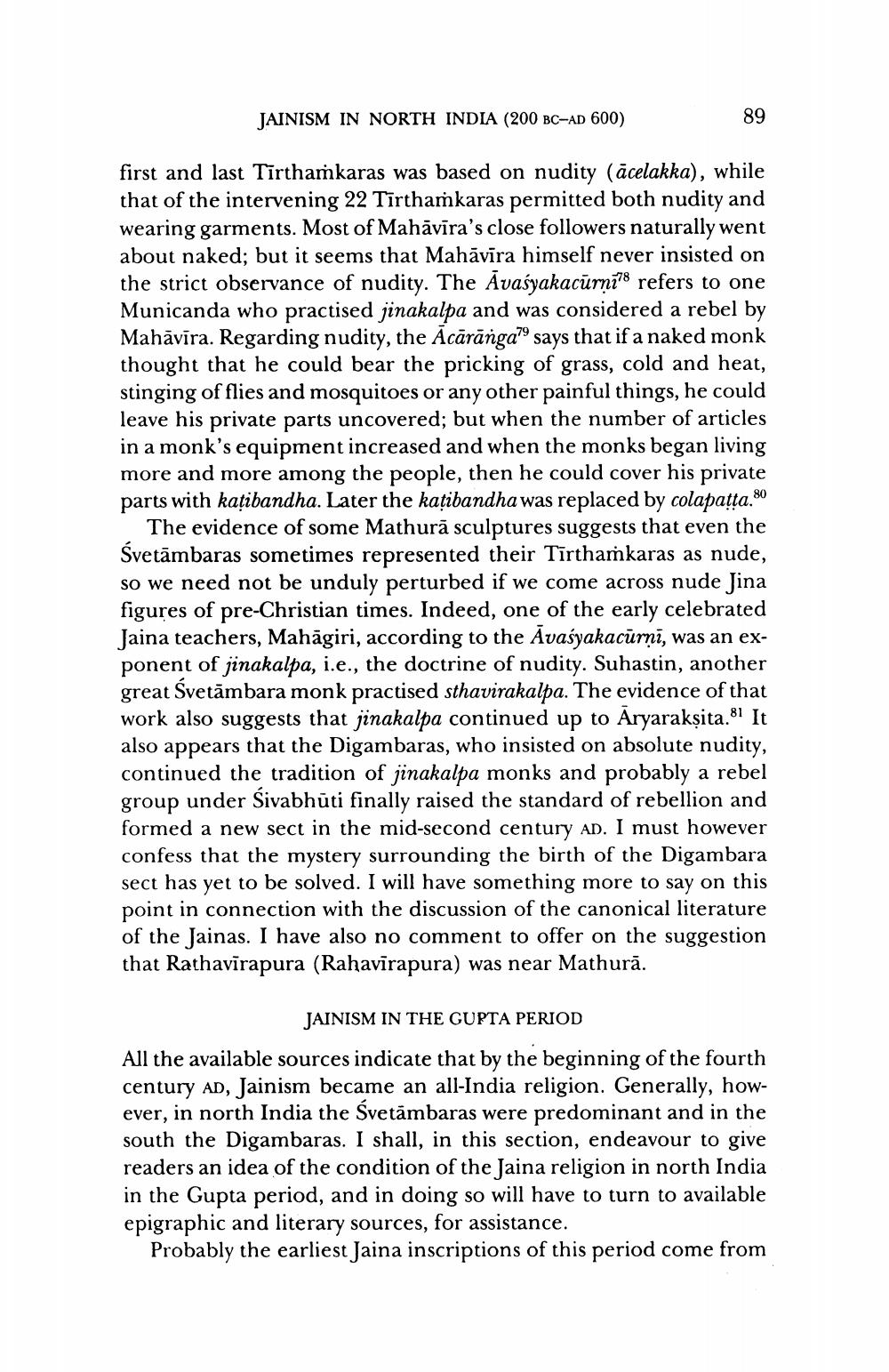________________
89
JAINISM IN NORTH INDIA (200 BC-AD 600)
first and last Tīrthamkaras was based on nudity (acelakka), while that of the intervening 22 Tīrthamkaras permitted both nudity and wearing garments. Most of Mahāvīra's close followers naturally went about naked; but it seems that Mahāvīra himself never insisted on the strict observance of nudity. The Avasyakacurṇi refers to one Municanda who practised jinakalpa and was considered a rebel by Mahāvīra. Regarding nudity, the Acaranga says that if a naked monk thought that he could bear the pricking of grass, cold and heat, stinging of flies and mosquitoes or any other painful things, he could leave his private parts uncovered; but when the number of articles in a monk's equipment increased and when the monks began living more and more among the people, then he could cover his private parts with katibandha. Later the kațibandha was replaced by colapaṭṭa.80
The evidence of some Mathura sculptures suggests that even the Śvetāmbaras sometimes represented their Tīrthamkaras as nude, so we need not be unduly perturbed if we come across nude Jina figures of pre-Christian times. Indeed, one of the early celebrated Jaina teachers, Mahāgiri, according to the Avasyakacūrṇī, was an exponent of jinakalpa, i.e., the doctrine of nudity. Suhastin, another great Śvetambara monk practised sthavirakalpa. The evidence of that work also suggests that jinakalpa continued up to Aryarakṣita.81 It also appears that the Digambaras, who insisted on absolute nudity, continued the tradition of jinakalpa monks and probably a rebel group under Śivabhuti finally raised the standard of rebellion and formed a new sect in the mid-second century AD. I must however confess that the mystery surrounding the birth of the Digambara sect has yet to be solved. I will have something more to say on this point in connection with the discussion of the canonical literature of the Jainas. I have also no comment to offer on the suggestion that Rathavīrapura (Rahavīrapura) was near Mathură.
JAINISM IN THE GUPTA PERIOD
All the available sources indicate that by the beginning of the fourth century AD, Jainism became an all-India religion. Generally, however, in north India the Śvetāmbaras were predominant and in the south the Digambaras. I shall, in this section, endeavour to give readers an idea of the condition of the Jaina religion in north India in the Gupta period, and in doing so will have to turn to available epigraphic and literary sources, for assistance.
Probably the earliest Jaina inscriptions of this period come from




